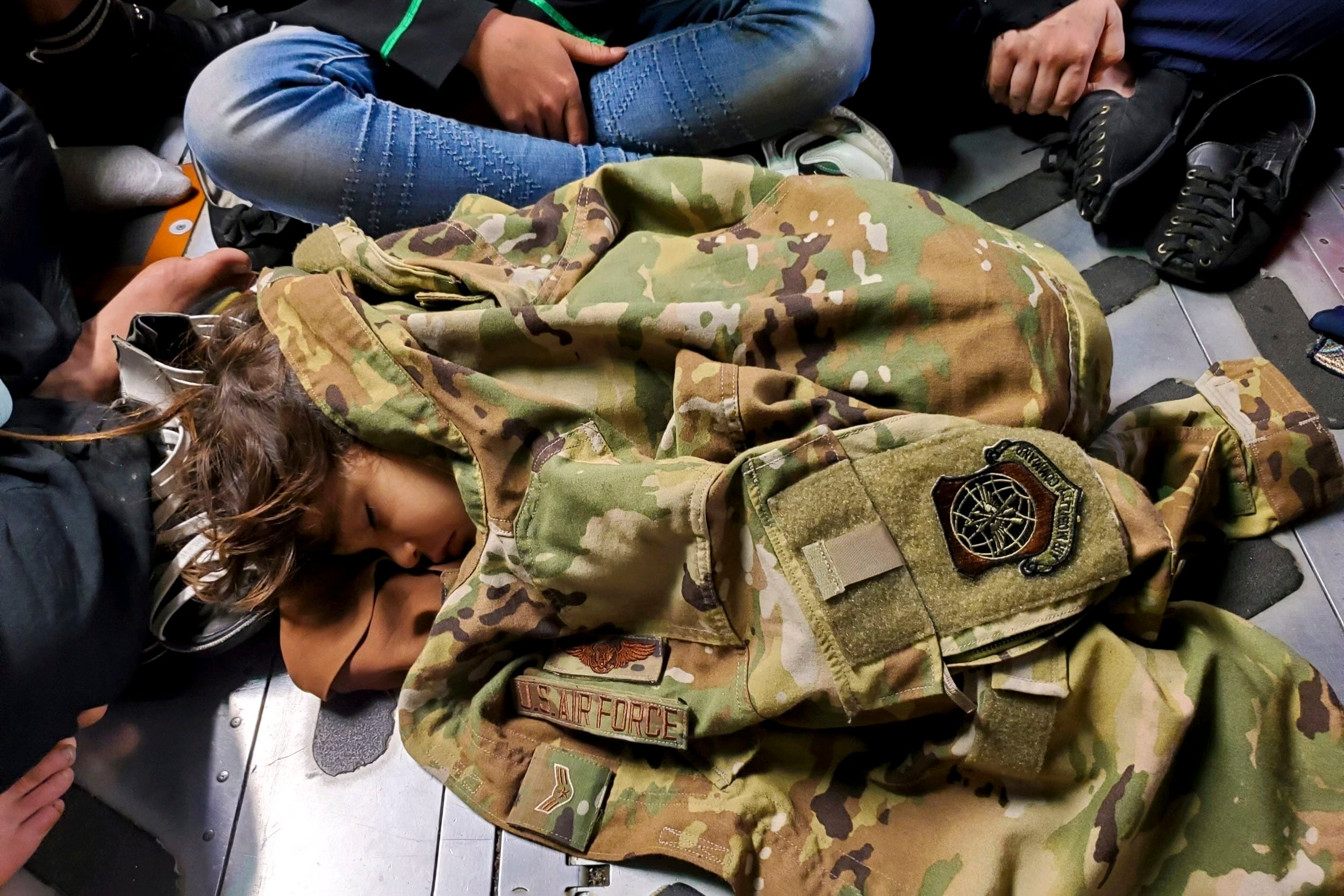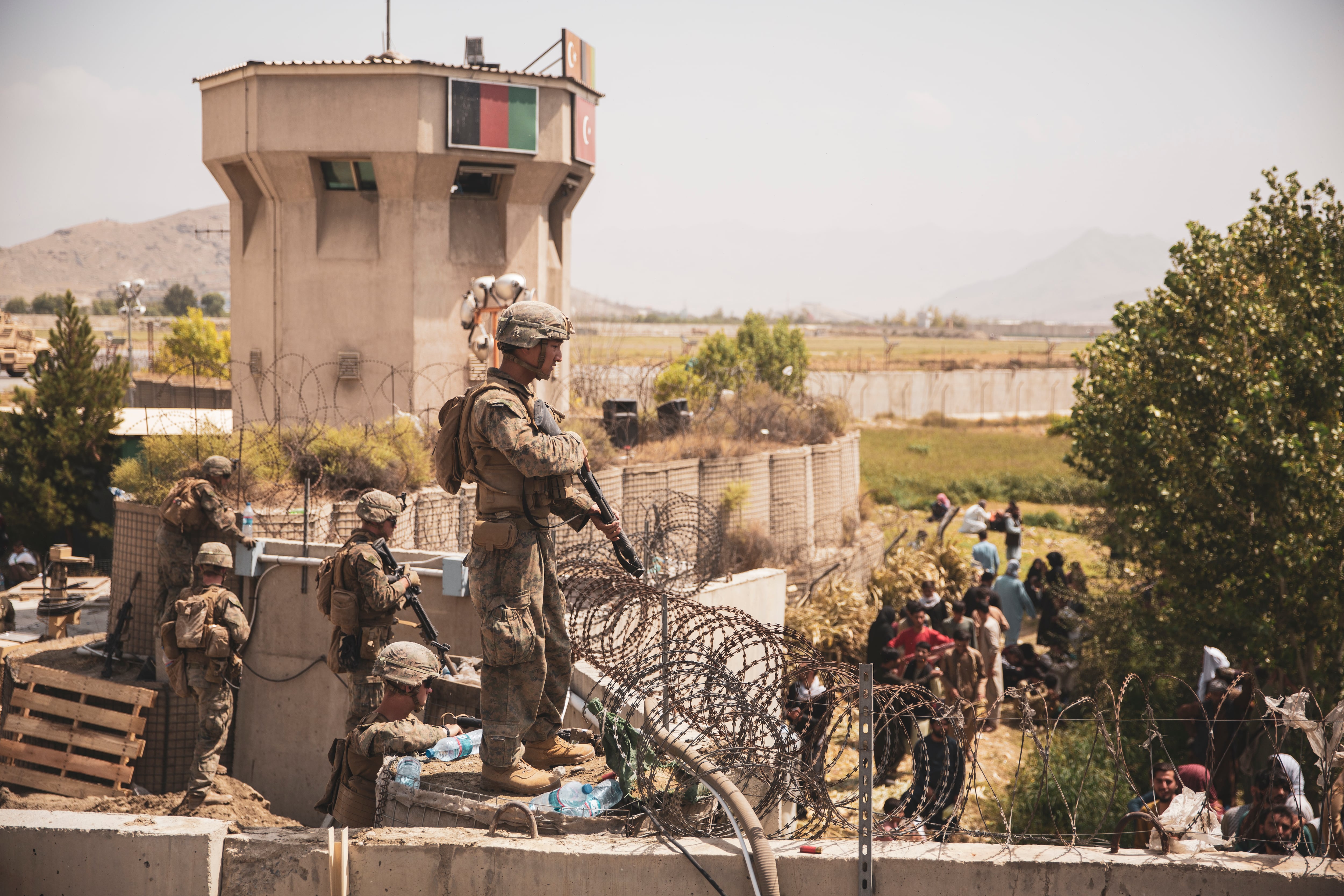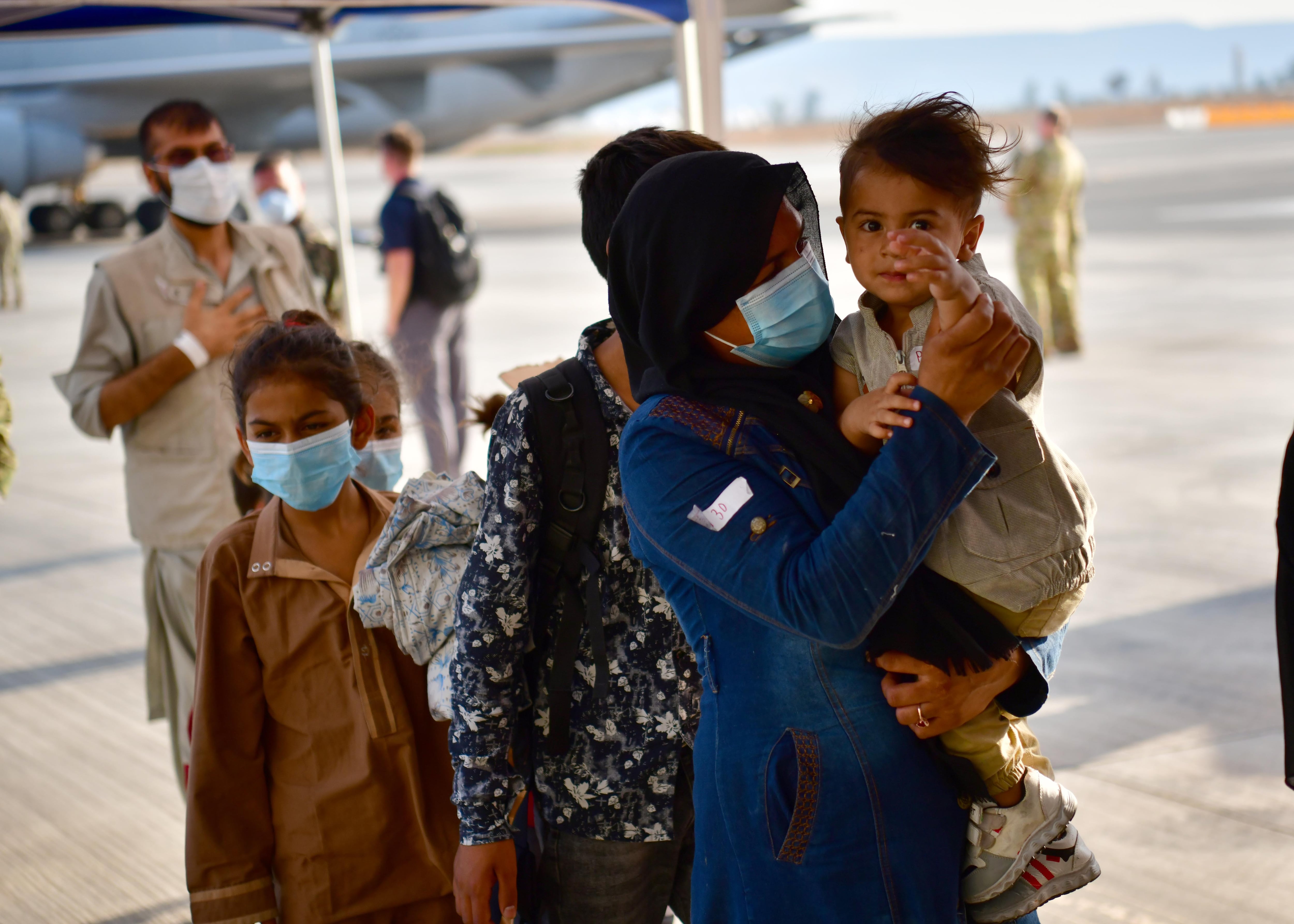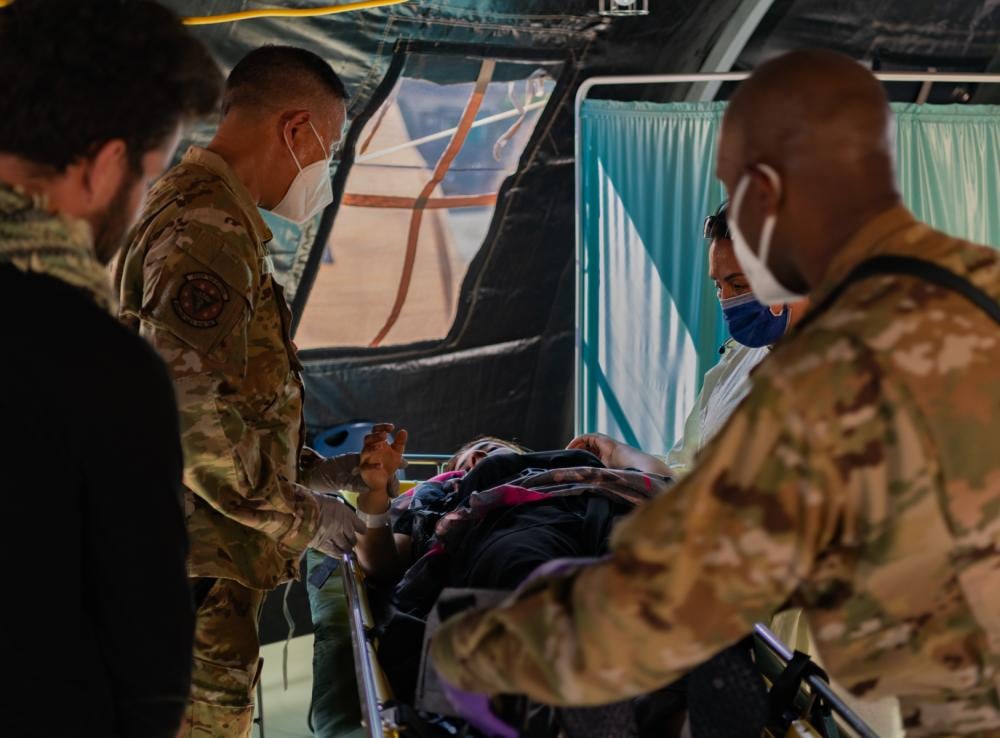The head of U.S. Transportation Command, the military organization spearheading the massive humanitarian evacuation effort in Afghanistan, said Monday he expects to ramp up flights out of the country even further as the Aug. 31 deadline to withdraw all American troops and Afghan allies approaches.
Nearly 11,000 evacuees left Afghanistan on U.S. military and coalition planes in a 12-hour span Monday, and about 48,000 people have escaped the country since Aug. 14, the White House said Monday evening. Evacuations spiked that weekend as Taliban extremists reclaimed control of the capital of Kabul from the U.S.-backed government after two decades of war.
“I’m very, very confident that we’ll sustain that effort, and improve that effort, to be honest with you,” Army Gen. Stephen Lyons, TRANSCOM’s commander, told reporters in a video briefing Monday. “My commitment is to ensure that airlift is never the constraint in this operation.”
RELATED

As of Monday morning, 25 C-17s, three C-130s and 61 other charter commercial and military flights had left Hamid Karzai International Airport in Kabul within the past 24 hours, said Army Maj. Gen. Hank Taylor, the Joint Staff deputy director for regional operations. Together, those aircraft carried about 16,000 people out of Afghanistan.
In a video briefing at the Pentagon, Lyons said the U.S. military has “well over 200 aircraft” assigned to the Afghanistan mission right now, from C-17 transport jets carrying people and supplies to the brand-new KC-46 Pegasus and 40-year-old KC-10 tanker aircraft that refuel cargo planes on longer trips. Aircrews are keeping those planes constantly moving, either by working longer days or swapping teams to let some airmen rest.
“I won’t lie to you, they’re tired. They’re probably exhausted in some cases,” he said. “I know that the leaders from time to time are pulling crews out to make sure we don’t have safety issues, but they are motivated, they are fired up, and they are committed to complete this mission.”
The airlift effort won’t scale back in the final week of August, he said, pledging to remain “razor-focused on clearing the Kabul International Airport of every evacuee that can move.”
“We’d never want to leave Kabul airport on an empty plane, or even a partially full plane, if we can avoid it,” Lyons said. “We’re filling the aircraft to about 400, 450 passengers [seated on the floor].”
Sometimes jets carry fewer passengers because a plane needs to hold more cargo, or because they need more space on board to transport injured evacuees.
RELATED

A small U.S. Air Force contingency response team arrived at the Kabul airport Aug. 15 to handle airfield operations and logistics, working alongside the Marine Corps to help with passenger boarding and departure. Turkish troops handled air traffic logistics until last week, when they handed those operations over to U.S. forces.
“If you imagine Dulles or Reagan National, what we’re doing is providing a scaled-down version of a huge complex environment, such as those international airports,” Col. Kyle Benwitz, 621st Contingency Response Wing vice commander, told reporters Aug. 20.
Those airmen are working as air traffic controllers to deconflict and coordinate arrivals and departures of aircraft scheduled by the 618th Air Operations Center, which manages airlift and tanker fleet logistics.
“Not only do we take care of aircraft and operations in the air, but we work to synchronize all those efforts on the ground, as well as numerous other capabilities such as weather, fuels and communication,” Benwitz said. “They are currently trying to repair generators at buildings that aren’t working, or repair airfield lighting that is inoperative, to ensure the safe launch and recovery of all these missions that are going through the airfield.”
Upon departure, evacuees head to American installations in Qatar, the United Arab Emirates, Kuwait, Bahrain, Italy, Spain and Germany before settling at their final destination. The U.S. plans to receive about 25,000 Afghans at Joint Base McGuire-Dix-Lakehurst, New Jersey; Fort Bliss, Texas; Fort McCoy, Wisconsin; and Fort Lee, Virginia.
RELATED

Ramstein Air Base in Germany said its first group of evacuees, which had begun arriving Aug. 20, had left for the United States shortly after midnight Monday. Along with Al Udeid Air Base in Qatar, Ramstein has emerged as a major hub for getting evacuees to a midway point where they can receive medical care and food before heading to the United States or another country that is accepting refugees.

“In the span of only a few long days, Ramstein Air Base transformed into U.S. European Command’s primary evacuation hub supporting one of the largest, most complex humanitarian airlift operations in history,” 86th Airlift Wing commander Brig. Gen. Josh Olson said on Facebook Monday. “Forty-eight hours after the first U.S. Air Force C-17 landed, we have had more than 7,000 evacuees on base from more than 30 C-17 and KC-10 flights.”
Some transport planes landed minutes apart, and many headed back to U.S. Central Command on the same day to fly more humanitarian missions, Olson added.
In a separate post, the base said it is limiting routine medical appointments while many of the base’s health care workers are helping evacuees. Three babies have been born in the course of evacuations, including at least one delivered on a C-17 that landed at Ramstein on Aug. 21.
“Our guests are exhausted and unsure of what to expect,” Olson said. “Many are traveling with only the clothes on their backs or a bag of their entire earthly possessions. Some need medical attention as soon as they land. But seeing the children and the families step off the plane with huge smiles warms the heart. We are saving lives, we are providing hope and YOU are making a difference.”
RELATED

The Pentagon has tapped 18 commercial airliners to help ferry people to safety, and formal and informal nongovernmental groups are also trying to find and usher former military translators and other vulnerable Afghans onto outbound planes.
“[Civil Reserve Air Fleet]-activated aircraft will not fly into Hamid Karzai International Airport,” the Pentagon said. “They will be used to move passengers from temporary safe havens and interim staging bases. Activating CRAF increases passenger movement beyond organic capability and allows military aircraft to focus on operations in and out of Kabul.”
Lyons declined to discuss potential threats to the American mission, saying he’s “confident that we’re taking the right measures to mitigate” Islamic State or Taliban interference.
Continued evacuation flights are made possible by thousands of U.S. ground troops keeping the airport secure, he added: “We’re trying to synchronize that as we go.”
Rachel Cohen is the editor of Air Force Times. She joined the publication as its senior reporter in March 2021. Her work has appeared in the Washington Post, the Frederick News-Post (Md.), Air and Space Forces Magazine, Inside Defense, Inside Health Policy and elsewhere.





